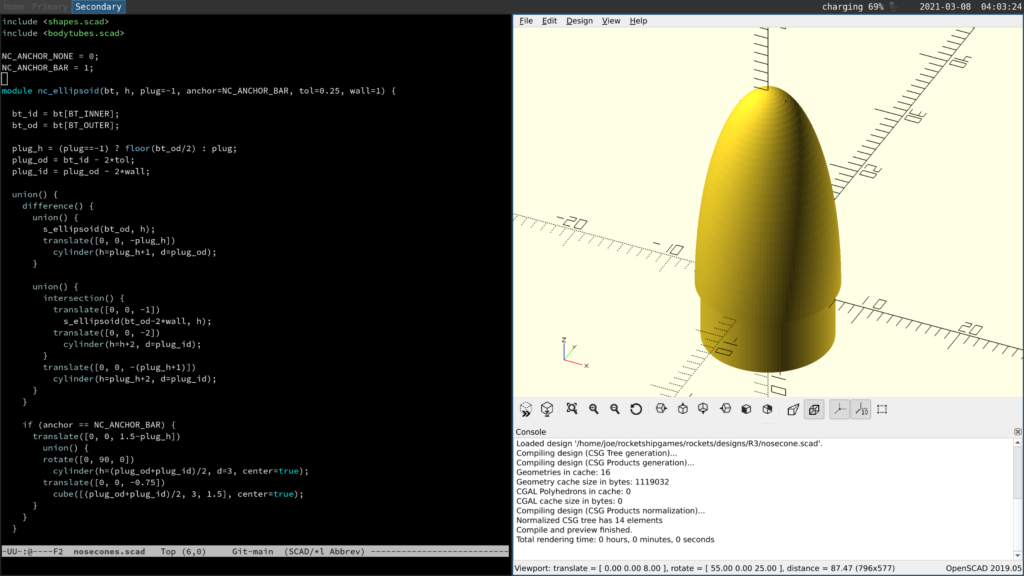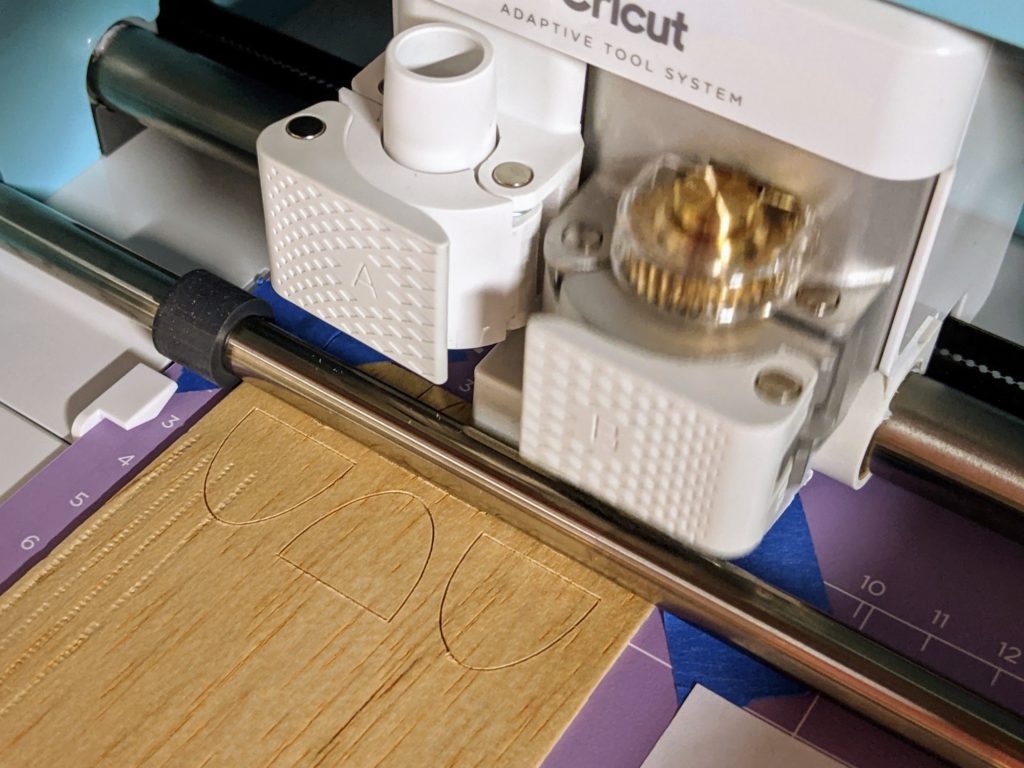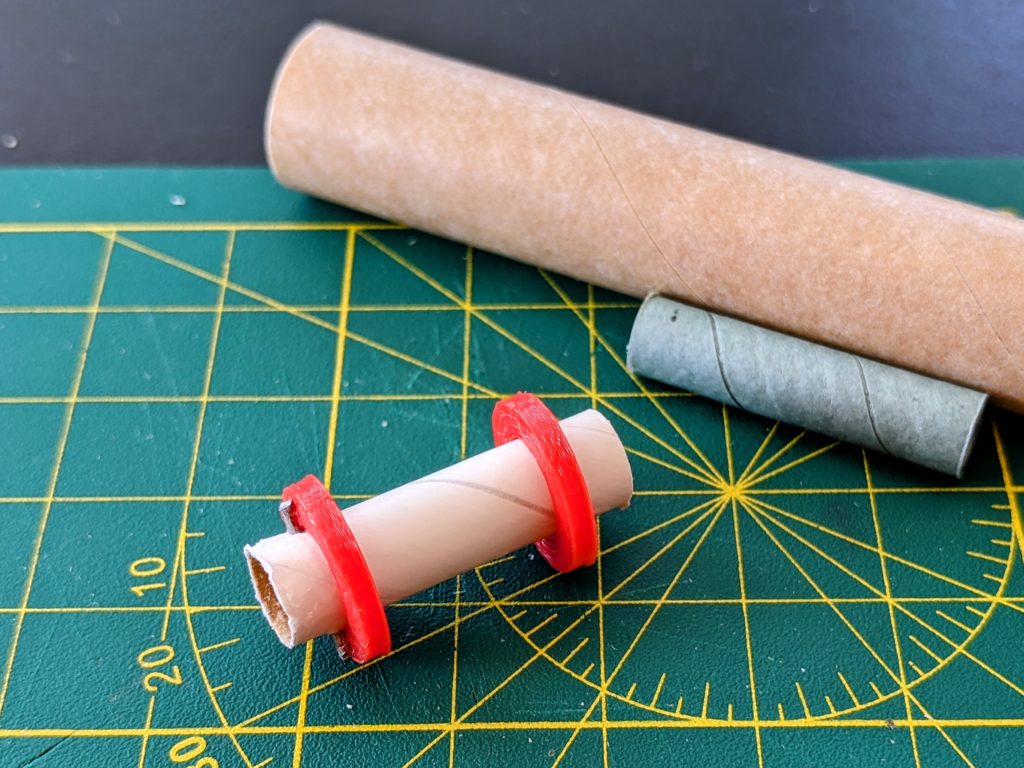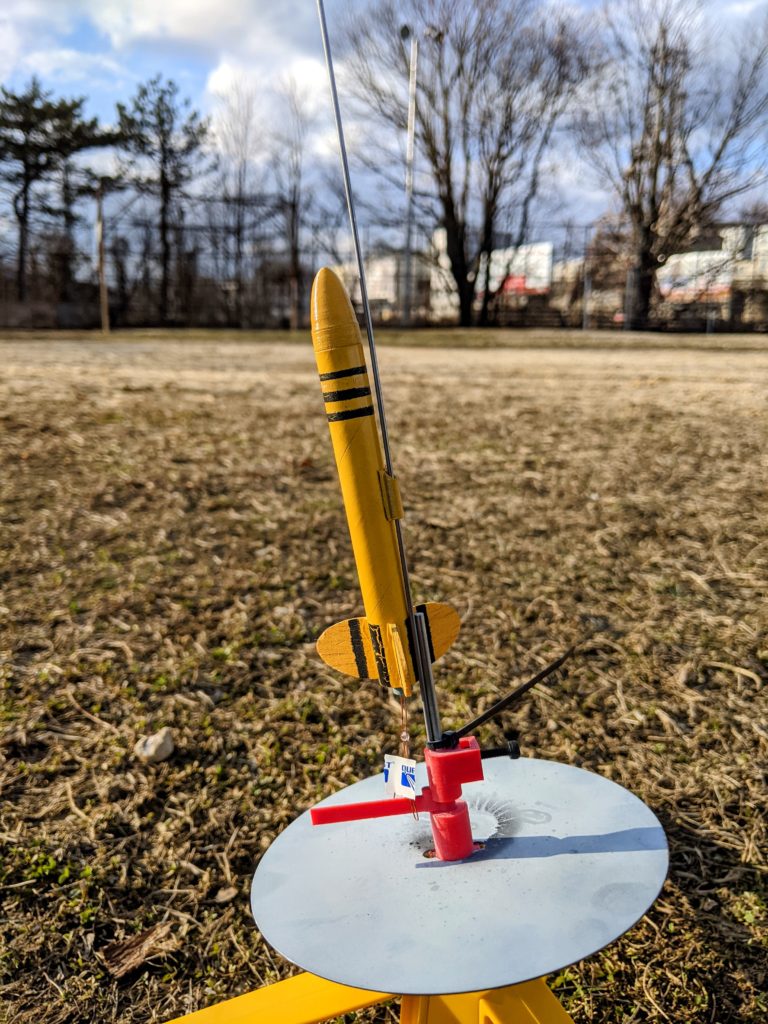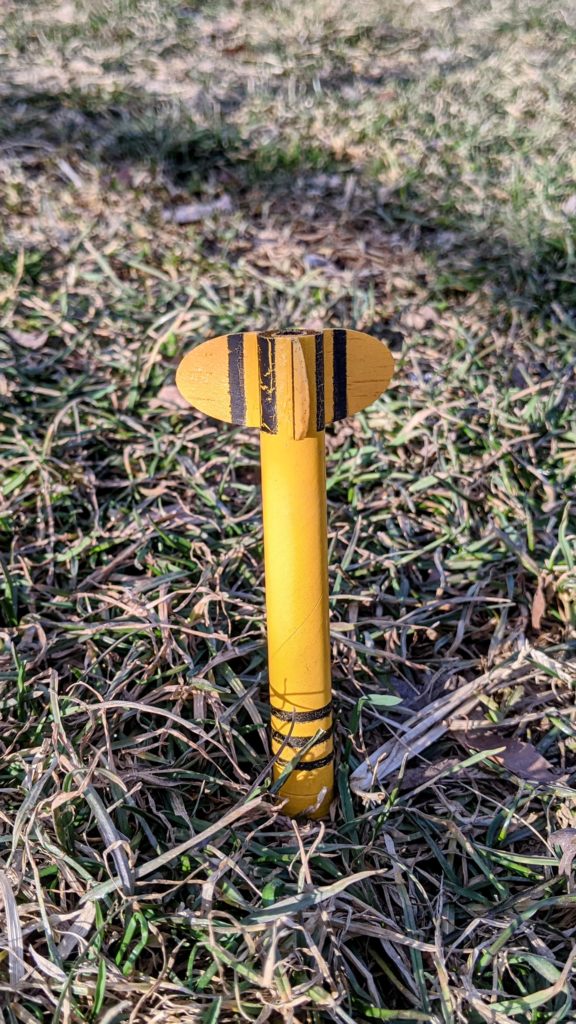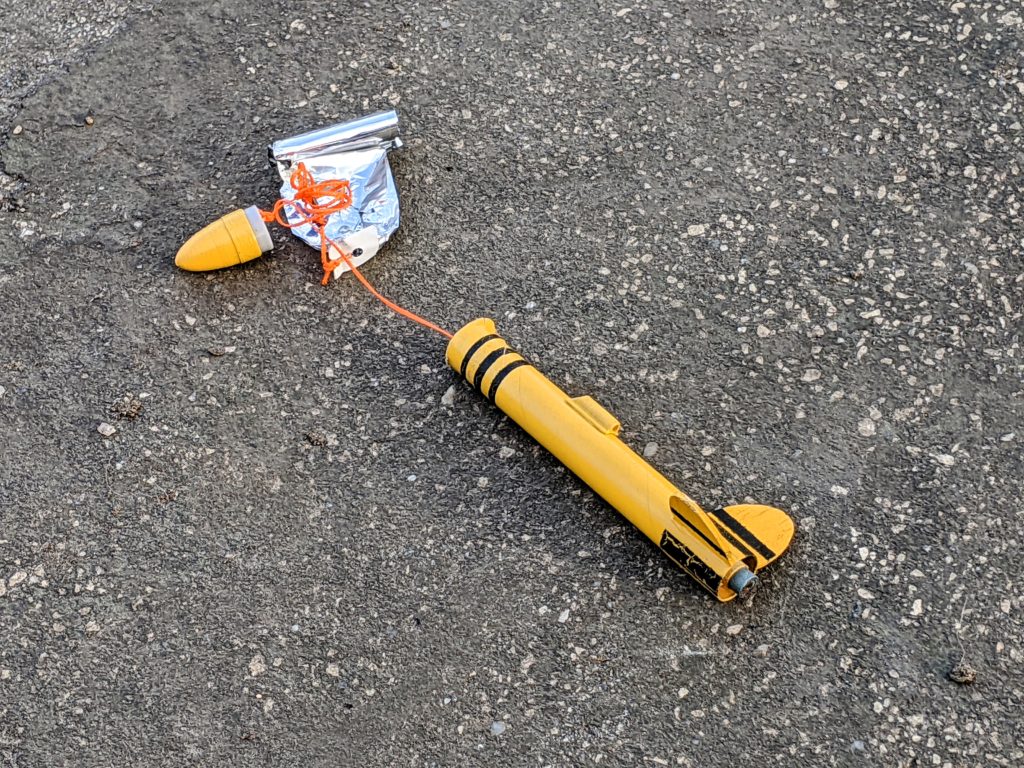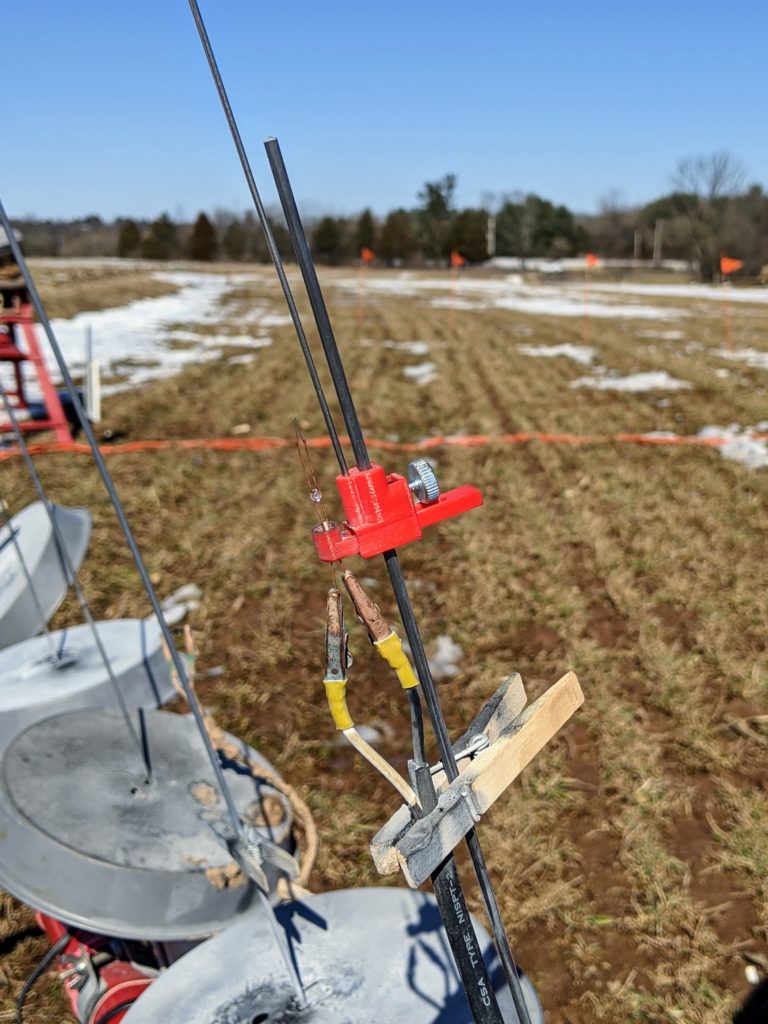The past week has also seen half a dozen launches of R3, my first micro-rocket. It’s an initial experiment with very low power motors amenable to small neighborhood launch sites. Quest MicroMaxx 6mm motors are used, equivalent to 1/8A and with less than a second of burn and no delay before ejection.
Unlike most micro designs I’ve seen so far, the body is a BT5 instead of a T-MM. This gives it a nice, solid look to my eyes more akin to a downscaled typical sport rocket than a straw with fins. R3 was designed in OpenRocket in order to hit a weight target of around 4g unloaded, which seems to be a common ballpark for micro-rockets, and assure stability. The elliptical fins are 1/16″ balsa drawn in Inkscape and cut with a Cricut Maker. An elliptical nosecone, conformal 1/16″ launch lug, and centering rings for the motor mount were modeled in OpenSCAD and 3D printed. The rings are ABS and the other parts PLA. A T-MM tube is used in the motor mount to insulate the rings from the motor, though this is almost certainly unnecessary. A small piece of music wire serves as the engine block. Recovery system is a streamer cut from a Mylar emergency blanket. This however has so far never deployed successfully and remains a work in progress. The finish is a quick spray painting; the masking came out less crisp than I’d prefer, but I like the styling overall.
Having forgotten to taken a picture once built—not at all because we were rushing out the door late for the launch as the spray paint was still drying—I fortunately at the last moment thought to to take a launchpad photo before it started sustaining damage. Recovery system design & packing in such a small rocket will take some more thought. The rocket survived one flutter landing and one ballistic landing on grass, then took a big hit from an asphalt landing after the streamer repeatedly failed to deploy. It was easily repaired though and flew again several times at yesterday’s PARA520 launch. The new, revised streamer still only partially deployed but the rocket had a reasonably soft dirt landing each time. All of the flights have otherwise, even in modest wind, been very straight & true and enjoyable to watch.
While the streamer will take some more work, overall this is a very satisfying design. It has a nice classic look to it, in a tiny form that we can easily launch from local ballfields. I expect to design and build more micros based on a BT5 like this.
Also very satisfying is the 1/8″ to 1/16″ launch rod adapter I’ve been designing and 3D printing. This lets you fly micros from a standard launcher. Unlike more traditional model rockets wherein a plug keeps the igniter attached for launch, MicroMaxx rockets are typically supported on the rod by the igniter itself. The igniter is set in place and then the rocket slid down the rod on top of it rather than the other way around. To facilitate this for rockets of varying diameter, my adapter design has a little sliding tray with a cup for the igniter. After ~2 iterations it’s trivial to print, attaches and adjusts quickly & smoothly, and provides a stable platform. More on this to come.

